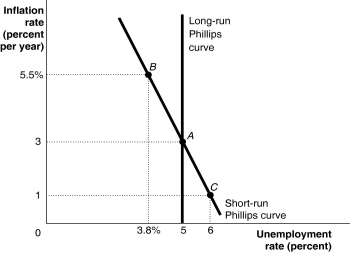Figure 13.2  Alt text for Figure 13.2: In figure 13.2, a graph shows the short-run and long-run Phillips curves.
Alt text for Figure 13.2: In figure 13.2, a graph shows the short-run and long-run Phillips curves.
Long description for Figure 13.2: The x-axis is labelled, unemployment rate (percent) .The y-axis is labelled, inflation rate (percent per year) .3 points; A (5, 3) , B (3.8%, 5.5%) , C (6, 1) are plotted on the graph.The points are connected to their respective coordinates on the x and y-axes with dotted lines.A straight line labelled, short-run Philips Curve, begins at the top left corner and slopes down to the bottom center, and passes through points A, B, and C.A straight line labelled, long-run Philips Curve, is perpendicular to the x-axis, begins from the x-axis value 5,and intersects the Short-run Philips Curve at point A.
-Refer to Figure 13.2.Suppose the economy is at point B.If the Bank of Canada increases the money supply so that inflation increases, the economy will ________ in the short run, holding all else constant.
Definitions:
Consensus
A general agreement or collective opinion among a group of people, often achieved through discussion and compromise.
Groupthink
is a phenomenon occurring within a group of people, in which the desire for harmony or conformity results in an irrational or dysfunctional decision-making outcome.
Overconfidence
A cognitive bias where an individual's subjective confidence in their judgments is reliably greater than their objective accuracy.
Accurate Decision
A decision that effectively meets the intended objective or solves the problem based on correct and reliable information.
Q21: Refer to Figure 14.4.Europe experiences an economic
Q79: To combat inflation, the federal government could<br>A)decrease
Q123: Many Canadian natural resource companies run mines
Q134: _ would be the source of a
Q139: Use the dynamic aggregate demand and aggregate
Q158: Canadian banks are regulated by the Bank
Q189: An increase in capital inflows will<br>A)increase net
Q204: The income tax system serves as an
Q247: Fiscal policy actions that are intended to
Q275: Many economists who would normally argue against